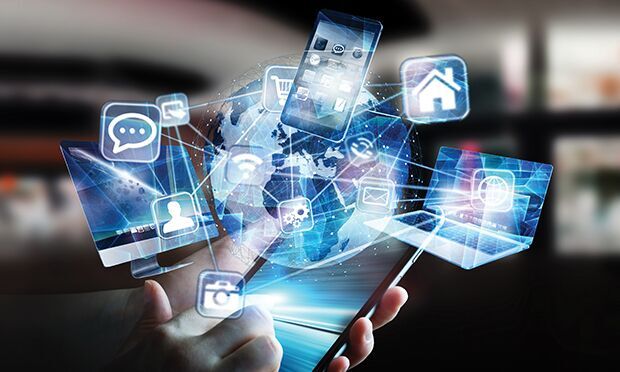Restaurants, cafes and other food and beverage outlets have been through some very trying times thanks to the Covid-19 pandemic. With dining-in being suspended under lockdown regulations, regular operations were disrupted. In order to keep business flowing and meet the new customer demands, many operators went full throttle to up their delivery and take-out game. Now, restaurants are gradually opening up across the US, but with the social context having changed so dramatically, things cannot run in the same way as they were in pre-corona times. Ensuring the health and safety of both staff and customers is the topmost priority for restaurateurs and this has required a complete overhaul in their approach to business.
Technology is playing a key role in shaping this newly evolving restaurant culture. With physical contact presenting a serious concern in spreading infection, many dining outlets are looking at automating as many processes as possible. There are also new corona-specific requirements that need to be adhered to and tech providers are coming up with effective and innovative solutions to meet these. New software, gadgets, devices and machines are being introduced on a regular basis for use in the different stages of the dining process thus providing maximum safety at all times.
Although self-service kiosks have been around for a while, the addition of new and diverse functions means they can now be utilized at different points of an F&B outlet. For instance, there are automated kiosks for checking a customer’s temperature. These have the ability to flag individuals running a temperature, either sending out an alert for further action or refusing that person entry. There are also automated sanitizer dispensers that work on a sensory mechanism requiring no touching. These could be freestanding or wall mountable, thus fitting into the available space and layout. So two newly-introduced and vital entry rituals – temperature checks and hand sanitizing – can be completely mechanized, thus sparing staff the risk of prolonged contact with customers.
Just like they have been used previously by some fast food outlets, restaurants and cafes too can employ self-service kiosks for placing orders and making payments. These unattended kiosks have different variations. The standard touch screen options are valuable because wait staff do not have to physically interact with a customer, preventing exposure to infection. Because of the consistent handling, these need regular sanitizing. Taking things up a notch are touch screen kiosks that come with their own self-sanitizing facility that uses UV-C technology. This germicidal light deactivates the DNA of bacteria and viruses in 30 seconds, thus stemming their spread. A sensor in the kiosk can detect the presence of a customer and trigger the cleansing process once the customer has moved away. There is one slight hitch and that is that it has yet to be tested on Covid-19. That said, it has proved effective against SARS and MERS, both types of coronavirus.
Some unattended-kiosks operate on a sensor system, allowing customers to select an option by pointing their finger at it from a distance of up to 2cm from the display panel. Scanning a QR code with a phone provides the opportunity for contactless payment. Minimizing touchpoints is crucial for keeping a restaurant free of infection. Touchless operations are also reassuring to a customer who need not worry about who has been handling the devices before them and this comfort will be one important reason for them to want to return.
Smart menu boards and online / in-app ordering are other possibilities for removing physical contact between customers and staff. The less time spent on face-to-face interactions, the less chance there is of infection. That said, conversations between waiters and customers help build a rapport and removing these physical interactions could run the risk of distancing a customer from the restaurant. That is why it is important to personalize the software, displaying frequently ordered items and recommending new items based on choices made by other customers with similar likes. This careful curation will make a customer feel special, which is really all the emotional encouragement they need to place an order.
A similar kind of personalised service can be offered at drive-thrus. With the help of Artificial Intelligence, the drive-thru kiosks can recognize cars or mobile phones and so make customized offers. AI could also help in directing the flow of traffic and make moving through lines faster and more efficient. The popularity of drive-thrus surged during lockdown and, given the current reluctance of a notable number of customers to dine in, this could continue to be their preferred mode for enjoying their favourite meal.
The impact of the pandemic on the restaurant sector was instant and customer behaviour changed immediately. Technology has played a key role in helping the F&B industry to adapt to lockdown and meet its ensuing demands. Restaurants are reopening to an already changed world and must adjust and revamp in order to thrive. Given the current context, it would be fair to say that integrating technology into the daily functioning of a restaurant is now a necessity and not an option.




